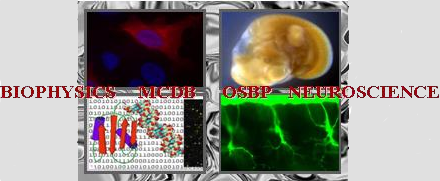Poster abstracts
Poster number 17 submitted by Sidharth Mohan
Consensus, Correlation and Combinatorics based approaches in engineering Triosephosphate Isomerase Stability
SIDHARTH MOHAN (Biophysics), NICHOLAS W. CALLAHAN (Biophysics), KIMBERLY R. STEPHANY (Department of Chemistry and Biochemistry, OSU), BRANDON J. SULLIVAN (Department of Chemistry and Biochemistry, OSU)
Abstract:
Nature exploits many protein folds, but we have only recently begun to understand the consequences of amino acid changes in a utilitarian manner. The conservation and co-variation of residues across homologous protein sequences throws light on the natural strategies employed in protein stability, and we can use statistical measures as a means to understand them. We have adapted relative entropy and mutual information metrics to reliably predict stabilizing mutations, and have begun to use combinatorial approaches to further our understanding of the meanings of amino acid consensus and correlations. Previously, a consensus variant of TIM (cTIM) suffered overall destabilization and impaired activity. However, a curated database of sequences yielded a variant with a native-like fold and activity (ccTIM). Since the variants differed minimally at the sequence level, we suspected the scrambling of statistical correlations in cTIM and developed combinatorial libraries to interrogate the exact nature of the differences between cTIM & ccTIM. Preliminary data points to global stabilization of the protein fold as a basis for the rescue of cTIM. We have developed a consensus-screening algorithm that has been applied to candidate TIM sequences from different branches of phylogeny in an attempt to exploit amino acid conservation & co-variation. Our results show a ~90% probability in identifying stabilizing mutations, with successful application to proteins with different folds. While we have begun to make rational mutations in ccTIM in an attempt to understand stability from the angle of destabilization of the fold, we hope to use positional binomial libraries and DNA-shuffling to further our knowledge of protein stability in this context.
Keywords: stability, engineering, library
